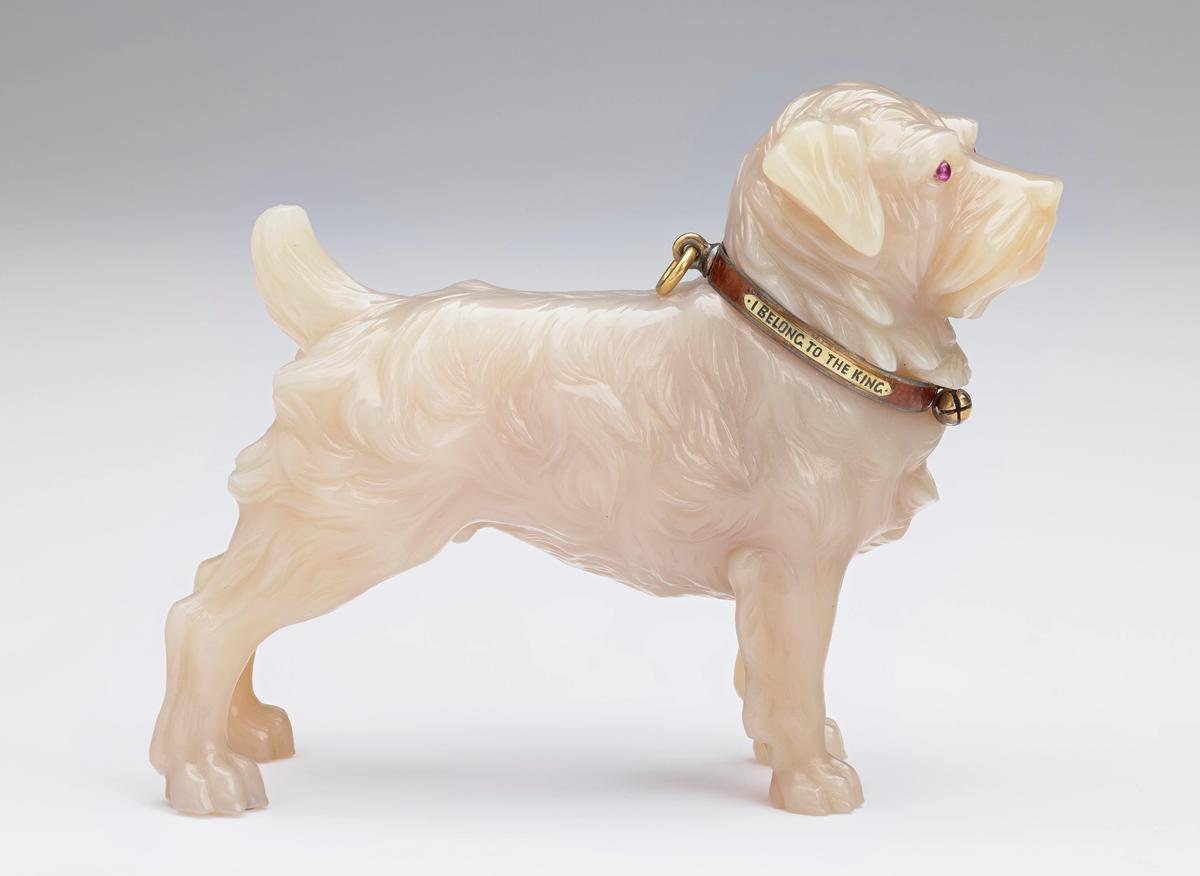In 1977 the Victoria and Albert (V&A) Museum mounted an exhibition in honour of the Queen’s Silver Jubilee called Fabergé: 1846-1920. It was a magnificent display of masterpieces from the famous Russian goldsmith and comprised 420 examples of the varied materials, techniques and design sources which set Fabergé above all his competitors. Perhaps the most affecting were more than 170 tiny hardstone animal sculptures and 20 or so jewelled flower studies lent from the Royal Collection.
But there was more: no less than 21 of the famous Imperial Easter Eggs cast a powerful spell and the public left dazed and amazed. Word soon got around, and every day queues formed in front of the museum and often extended halfway up the road outside. It turned out to be one of the most popular exhibitions of the time, attracting 150,000 people and rivalling even Treasures of Tutankhamun at the British Museum in 1972.
It is hardly surprising that the V&A has decided to echo the success of the 1977 blockbuster in a new show called Fabergé: Romance to Revolution. There are a good 200 exhibits but the curators have taken a fresh stance by focusing on the history of Fabergé’s only foreign branch, which was established in London in 1903 primarily to furnish the British royal family and its court.
Royalty and the plain rich
These enchanting objects were very costly but not always intrinsically valuable and therefore carried little risk of compromising the lucky recipient. Indeed they were perfectly pitched as gifts for Queen Alexandra, consort of King Edward VII, who had learned of Fabergé from her sister, the Russian Empress Maria Feodorovna. The Queen was devoted to her pets and her gardens but she also loved her Fabergé animals and her unrivalled group of unfading flowers.
In the age of the telephone and the motorcar Fabergé’s fame spun almost out of control and at its height there were 500 employees, four branches in Russia as well as the one in London. We know from surviving ledgers that the London clientele was comprised of international royalty, aristocracy and the plain rich. However, newly discovered work books and diaries provide more precise details of patrons and their purchases, details which are, almost by default, a social history of the Edwardian elite.
There is never the slightest hint of disquiet in Fabergé’s work and its aim, albeit subliminal, was to offer a distraction from the contemporary concerns of industrialisation, war and burgeoning revolution. Even now these compelling objects continue to be a joyful indulgence. Happily, the curators have allowed themselves their own indulgence by framing the story of Fabergé’s London branch with a number of masterpieces that were never actually there. Not that it matters much, as these delicious objects continue to give uncomplicated pleasure, even now, when the need for it is acute.
There are more than 400 publications devoted to Fabergé and there have been dozens of museum exhibitions across the world. They inevitably include familiar ingredients, leaving devotees yearning for something fresh on the menu.
The show at the V&A is a feast but at the Brighton Museum & Art Gallery, an exquisite collection is a welcome digestif. It is a notable group of five enamelled and gem-set desk ornaments that have, quite unaccountably, eluded researchers until now. Never seen in public before, this small but beautiful display opens at the same time as the V&A show and will handsomely reward a visit to the seaside.
• Fabergé: Romance to Revolution, V&A, London, 20 November-8 May 2022
• Finding Fabergé: The Mysterious Story of the Preston Manor Fabergé, Brighton Museum & Art Gallery, 2 November-June 2022


